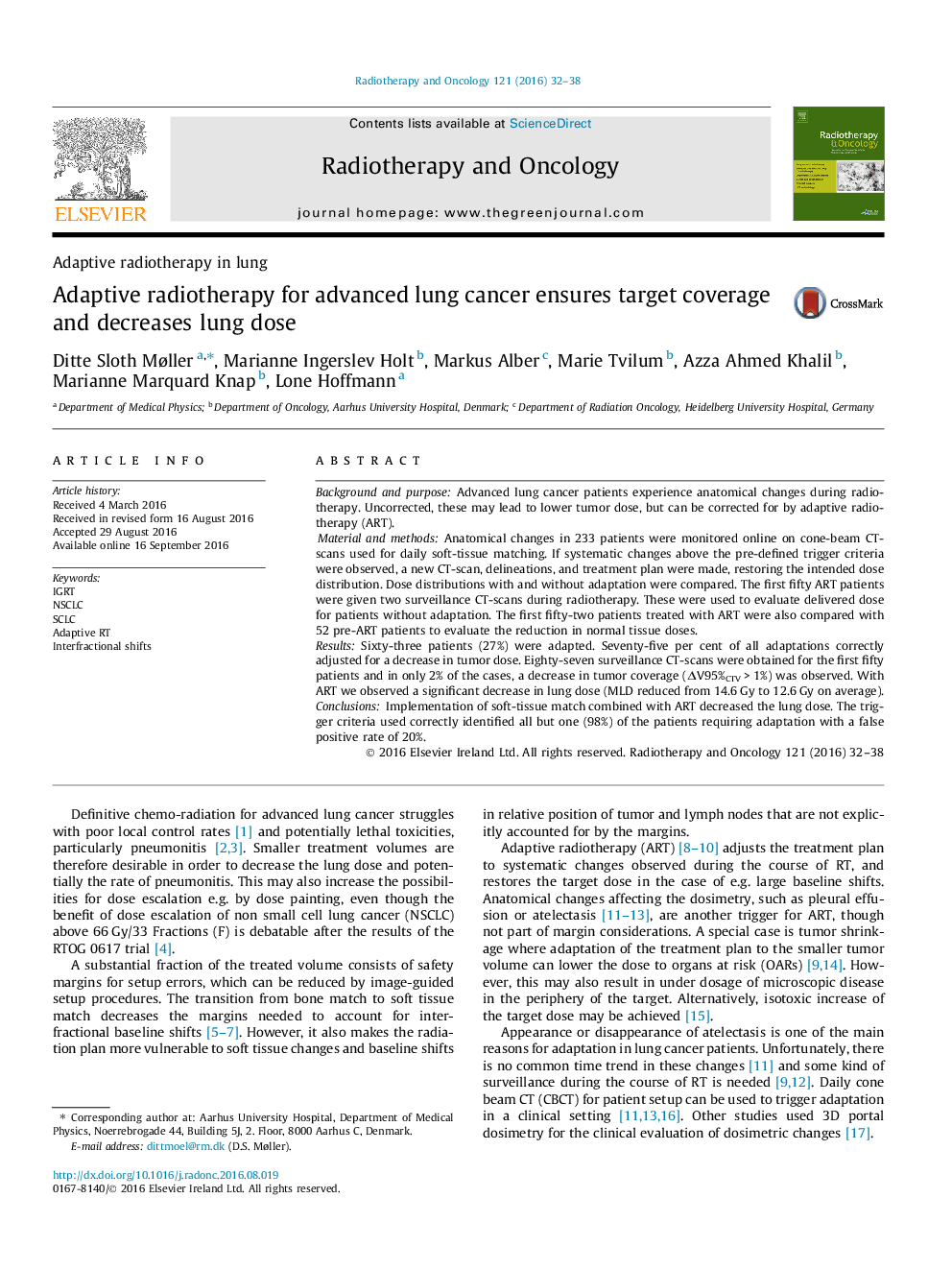| Article ID | Journal | Published Year | Pages | File Type |
|---|---|---|---|---|
| 5529790 | Radiotherapy and Oncology | 2016 | 7 Pages |
Background and purposeAdvanced lung cancer patients experience anatomical changes during radiotherapy. Uncorrected, these may lead to lower tumor dose, but can be corrected for by adaptive radiotherapy (ART).Material and methodsAnatomical changes in 233 patients were monitored online on cone-beam CT-scans used for daily soft-tissue matching. If systematic changes above the pre-defined trigger criteria were observed, a new CT-scan, delineations, and treatment plan were made, restoring the intended dose distribution. Dose distributions with and without adaptation were compared. The first fifty ART patients were given two surveillance CT-scans during radiotherapy. These were used to evaluate delivered dose for patients without adaptation. The first fifty-two patients treated with ART were also compared with 52 pre-ART patients to evaluate the reduction in normal tissue doses.ResultsSixty-three patients (27%) were adapted. Seventy-five per cent of all adaptations correctly adjusted for a decrease in tumor dose. Eighty-seven surveillance CT-scans were obtained for the first fifty patients and in only 2% of the cases, a decrease in tumor coverage (ÎV95%CTVÂ >Â 1%) was observed. With ART we observed a significant decrease in lung dose (MLD reduced from 14.6Â Gy to 12.6Â Gy on average).ConclusionsImplementation of soft-tissue match combined with ART decreased the lung dose. The trigger criteria used correctly identified all but one (98%) of the patients requiring adaptation with a false positive rate of 20%.
